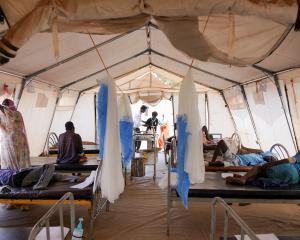But you still can't resist wondering when the Chinese economy will be bigger than the US economy - or the Brazilian bigger than the British, or the Turkish bigger than the Italian - as if it were some kind of horse race.
The latest document to tackle these questions is The World in 2050, drawn up by HSBC bank, which ranks the world's 100 biggest economies as they are now, and as (it thinks) they will be in 2050.
It contains the usual little surprises, like a prediction that per capita incomes in the Philippines and Indonesia, now roughly the same, will diverge so fast that the average Filipino will have twice the income of the average Indonesian by 2050.
The Venezuelan economy will only triple in size, but Peru's economy will grow eightfold. Per capita income will double and a bit in Nigeria; in Ethiopia it will grow sixfold. Bangladesh powers past Pakistan, with a per capita income in 2050 that's half again as big as Pakistan's. (It's only two thirds of Pakistan's at the moment.)
And so on and so forth: local phenomena mostly of interest to local people. But what's happening at the top of the list is of interest to everybody. That's where the great powers all live, with the Brics nipping at their heels.
Or rather, some of the Brics are nipping at their heels, and some are not. That's the big news. We owe the concept of the Brics to Jim O'Neill, who came up with it almost 15 years ago when he was head of economics at Goldman Sachs.
He was the first to realise that some big, poor countries were growing so fast economically they would overtake the established great powers in a matter of decades.
The really impressive performers were Brazil, Russia, India and China, so he just called them the Brics - and pointed out that at current growth rates the Chinese economy would be bigger than that of the United States by the 2040s.
We're quite familiar with that kind of prediction today, but at the time it was shocking (especially to Americans), and the term Bric has become firmly entrenched in the language. Just in time for HSBC to spoil it.
By now the Brics are formally the Brics (with an S added for South Africa). But the South African economy is only in the group out of courtesy, because you couldn't leave Africa out altogether.
It's much smaller than any of the others and growing very slowly, so you can safely leave it out of the calculations altogether.
China is performing roughly as expected, and by 2050 its economy will be about 10% bigger than that of the United States. (Per capita income, of course, is a different matter, and even then China's will be only a third of America's.)
India will come next, but with an economy only one third as big as China or the United States. But the other Brics practically vanish from view. Brazil hasn't even overtaken Britain by 2050, despite having three times as many people.
And Russia's performance is downright embarrassing: its economy barely doubles in the next 35 years, and it ends up smaller than Spain's. So six of the top 10 countries in the 2050 list are already there today, and the world isn't going to look so dramatically different at all.
Now, predictions like this are open to all sorts of criticism. China's growth rate has consistently been two or three percentage points higher than India's for several decades. Project that to 2050, and China ends up far ahead of India.
But China's growth rate is falling, and India's may even overtake it this year. India will almost certainly grow faster in the long run, because it has a young, rapidly growing labour force and China does not. There's enough time for that to change the pecking order radically by 2050.
The recent performance of the economy obviously affects the long range forecast more than it should, so Russia drops down the list and Mexico goes soaring up. Five years ago it would have been the other way around, and yet there's no reason to believe that the fundamental strengths of either economy have changed.
And then there are events like the Sarajevo assassination that tumbled the world into the First World War and invalidated all assumptions about the economic future.
Not to mention the disasters that you know are coming, like catastrophic climate change - but leave out of your calculations anyway, because you don't know how to quantify them.
All that said, some sketchy notion of what the future may bring is better than no idea whatever. And the basic idea behind the Brics is still sound: the centre of gravity of the world economy is moving south and east.
Gwynne Dyer is an independent London journalist.












